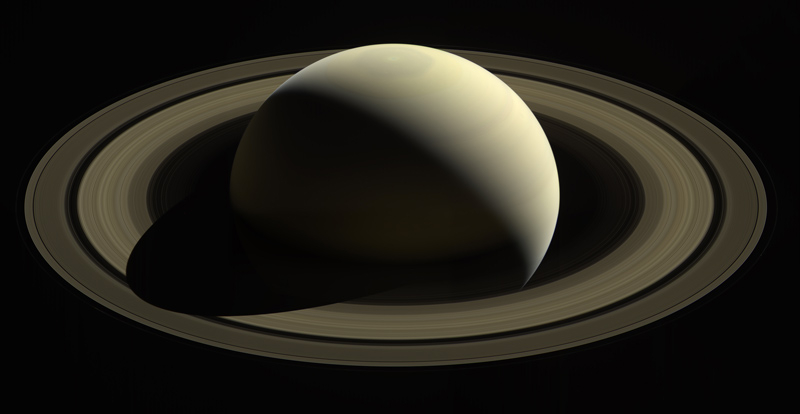Ripples in Saturn's rings reveal fuzzy core

Data from the Cassini mission, showing rippling waves in Saturn's rings, has at long last been interpreted as evidence for the planet containing a fuzzy core.
It was in the early 1990s that the idea of waves in Saturn’s rings was first put forward by Mark Marley and Carolyn Porco, who a few years later took the lead of the Cassini Imaging Team. Data regarding such waves in Saturn’s rings was then first investigated in 2013 to distinguish between, on one hand, gravitational effects due to Saturn’s moons, and on the other hand, any other patterns. It’s those that have been investigated to build a new model of the planet’s interior.

In the study, published in Nature Astronomy, the researchers started from the measurements of “ripples” in Saturn’s rings by NASA probe Cassini. These pulsations occur as a result of oscillations in the interior of the gas giant, much like an earthquake and the seismic waves that releases, and it is straightfoward to appreciate that the internal structure and composition of the planet will determine the way these waves propagate. While Cassini crashed into Saturn in 2017, it took years to probe the different models of the planet’s interior by running simulations of seismic events. The best explanation turns out to be most unexpected: Saturn is very likely to have a “fuzzy” core, a diffuse amalgam of ice and rocks and also gases. While the team suggests an alternative hypothesis according to which Saturn could be composed of multiple more layers, the fuzzy core proposition correlates with findings from the Juno mission that could be justified with an equally diluted core inside Jupiter.

Back to Saturn, the team concludes that the core accounts for “60% of the planet’s radius and containing approximately 17 Earth masses of ice and rock” for a core of 55 Earth masses. This challenges our understanding of how gas giants form: the traditional explanation postulates that within the protoplanetary disk surrounding a newly-formed star, a rocky and icy planetesimal just under the size of the Moon has enough gravitational attraction power to retain an atmosphere. Computer simulations show that staring from a more massive rocky core, processes like attracting the gases in the disk (mainly Hydrogen and Helium) and ice pebbles that evaporate as they pass through the forming atmosphere, but also the boiling of oceans, a gas giant can be formed that displays similar characteristics to what has so far been observed in the upper atmospheric layers.

With their analysis of the Cassini data though, the two Caltech astronomers propose a new theory: to have a fuzzy core, the planetesimal must incorporate gases earlier than during the atmosphere-formation period. Aside from the insights this gives us on our own Solar System’s formation, this has wider implications for the search for exoplanets, especially when studying proto-systems and modelling the resulting planet type. Additionally, the success of this method is promising for future seismic investigations of, notably, Venus.

Saturn’s rings are not just one of the great targets for astrophotography this month, they just brought to light phenomena going on in the depths of the gas giant’s core.
Cover Image: Cassini Illustration, NASA/JPL-Caltech/Space Science Institute
Image Credits:
1 - Rippling waves from Daphnis, NASA/JPL-Caltech/Space Science Institute
2 - Internal Structure of Saturn, Caltech/R. Hurt (IPAC)
3 - Gas giant formation, Adapted from "Steamworlds: Atmospheric Structure and Critical Mass of Planets Accreting Icy Pebbles" for Carnegie Science
4 - So Far from Home, NASA/JPL-Caltech/Space Science Institute
